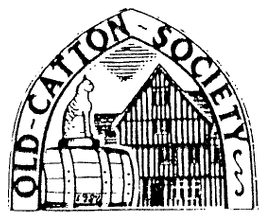On 15th March we welcomed Stuart Fidler, speaking in support of the SSAFA, about a fascinating personal journey as a naval officer serving in the army, from 1960 to the Falklands war.
Having trained as radio operator his first posting was HMS Rocket which on a friendly visit to Ireland was fired on by an unfriendly farmer from the bank of a river deep in the country! In 1963 he boarded an aircraft carrier which journeyed to Aden and Kenya, and In the Far East gaining experience in underwater explosives, commando and parachute training.
Land based from 1969 he became involved in UK air traffic control, including support of mobile helicopter displays, and worked at Eastern Radar Watton, monitoring civil and military aircraft over Norfolk and the east coast up to Yorkshire.
Life then became more serious. Called to RNAS Yeovilton he joined 5 Infantry Brigade and then embarked on QE2 as it began the arduous journey to the Falkland Islands on 12th May 1982. On route news was received of the sinking of four British frigates and the Atlantic Conveyor. On board troops were fully engaged in weapons training and familiarisation with several types of helicopter carried on board.
Reaching South Georgia he transferred to the Canberra (with a Russian ‘trawler’ nearby!). The Argentine military had by then retreated from much of the territory, and among the captured soldiers was a 14 year old boy. Thereafter Stuart took part in movements in and around the islands, including one night-time move in a blacked-out landing craft, and took part in the final assault on Stanley from Mount Tumbledown in difficult conditions (-22°F) over rough terrain where Snoots 1came into their own. When combat ceased there were many captive Argentine soldiers to supervise and an astonishing heap of abandoned weapons.
This was a very thought-provoking story of a varied military career and reminder of the human sacrifice involved in wa
Ray Jones
On 15th March we welcomed Stuart Fidler, speaking in support of the SSAFA, about a fascinating personal journey as a naval officer serving in the army, from 1960 to the Falklands war.
Having trained as radio operator his first posting was HMS Rocket which on a friendly visit to Ireland was fired on by an unfriendly farmer from the bank of a river deep in the country! In 1963 he boarded an aircraft carrier which journeyed to Aden and Kenya, and In the Far East gaining experience in underwater explosives, commando and parachute training.
Land based from 1969 he became involved in UK air traffic control, including support of mobile helicopter displays, and worked at Eastern Radar Watton, monitoring civil and military aircraft over Norfolk and the east coast up to Yorkshire.
Life then became more serious. Called to RNAS Yeovilton he joined 5 Infantry Brigade and then embarked on QE2 as it began the arduous journey to the Falkland Islands on 12th May 1982. On route news was received of the sinking of four British frigates and the Atlantic Conveyor. On board troops were fully engaged in weapons training and familiarisation with several types of helicopter carried on board.
Reaching South Georgia he transferred to the Canberra (with a Russian ‘trawler’ nearby!). The Argentine military had by then retreated from much of the territory, and among the captured soldiers was a 14 year old boy. Thereafter Stuart took part in movements in and around the islands, including one night-time move in a blacked-out landing craft, and took part in the final assault on Stanley from Mount Tumbledown in difficult conditions (-22°F) over rough terrain where Snoots 1came into their own. When combat ceased there were many captive Argentine soldiers to supervise and an astonishing heap of abandoned weapons.
This was a very thought-provoking story of a varied military career and reminder of the human sacrifice involved in war.
Ray Jones
